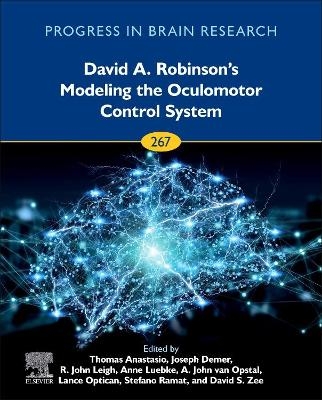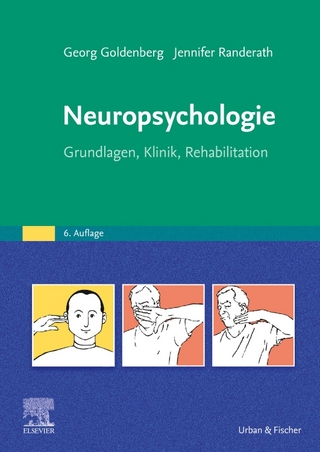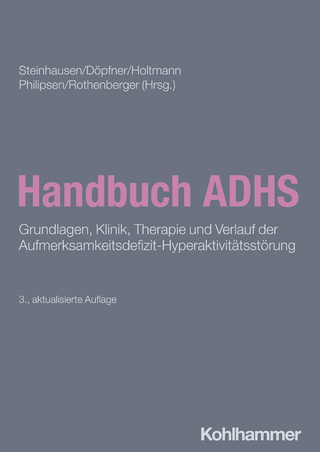
David A. Robinson’s Modeling the Oculomotor Control System
Elsevier - Health Sciences Division (Verlag)
978-0-323-99217-6 (ISBN)
Thomas J Anastasio received a BSc in Psychology from McGill University in 1980 and a PhD in Physiology and Biophysics from the University of Texas at Galveston in 1986. He did postdoctoral work at Johns Hopkins University until 1988. He held a non-tenure tract position at the University of Southern California until 1991, and a tenure-tract/tenured position at the University of Illinois at Urbana-Champaign until his official retirement in 2019. His interest has been focused on neurobiology but he has worked with collaborators from mathematics to history, and he strongly supports interdisciplinary interaction as a mechanism for gaining new insights into brain function. He currently does research on problems in polypharmacy, using AI to identify potentially effective drug combinations for the treatment of neurodegenerative and psychological disorders. He also does scholarly work centered on neurobiology but spanning multiple disciplines. Joseph L. Demer, MD, PhD, is the Arthur L. Rosenbaum Professor of Pediatric Ophthalmology, Professor of Neurology, Chief, Pediatric Ophthalmology & Strabismus Division, Director, Fellowship in Pediatric Ophthalmology & Strabismus, Director, Ocular Motility Laboratories, Chair, EyeSTAR Residency-PhD/PostDoc Program in Ophthalmology and Visual Science. Dr. Demer's clinical specialties include pediatric ophthalmology, adult strabismus, and other disorders of ocular motility such as nystagmus. He is a biomedical engineer whose federally-funded research includes anatomy and imaging of the eye muscles, and the biomechanics of eye movements and optic nerve disorders. Dr. Demer provides clinical care and ophthalmic surgery at the Stein Eye Institute in Westwood. Dr. Richard Leigh is an Assistant Professor of Neurology who is devoted to the diagnosis, treatment and prevention of cerebrovascular disease. He is an attending on the inpatient stroke service and an integral part of the Brain Attack Team. He also provides consultations and follow-up care for cerebrovascular disease in the outpatient setting. Dr. Richard Leigh was originally trained as a biomedical engineer at the Johns Hopkins University and subsequently went on to work at the National Institutes of Health where he developed brain imaging software. He then embarked on obtaining his medical degree from Case Western Reserve School of Medicine in his home town of Cleveland, Ohio. He completed his medical internship and neurology residency at New York Presbyterian Hospital Weill Cornell Medical Center where he received the Distinguished House Staff Award and was selected to be Chief Resident of Neurology. Returning to Johns Hopkins, he then completed a stroke fellowship and subsequently joined the faculty of the cerebrovascular division. Dr. Leigh currently sees patients at the Stroke Prevention Clinic, located in the Johns Hopkins Outpatient Center in Baltimore on Wednesday afternoons, and cares for patients in The Johns Hopkins Hospitals Brain Anne Luebke is an associate professor in both Departments of Biomedical Engineering and Neurobiology and Anatomy. Her research focuses on auditory and vestibular efferent feedback mechanisms at both the systems and molecular level. Her work has provided insights into the efferent receptor molecules needed for protecting the ear from background noise, to molecules important for hearing-in-noise behaviors and control of gaze stabilization. Moreover, she has investigated how cochlear efferent system feedback might be enhanced in people with high musical aptitudes, and impaired in people with autism spectrum disorders. She has published expertise in molecular cloning, biochemical methods, immunohistochemistry, confocal imaging, vestibular and auditory testing, and virally-mediated gene transfer. She has been continuously funded from the NIH from her first award R01 (awarded 1996) to the present. Luebke received two undergraduate degrees (BA-chemistry; BS-chemical engineering) from Oklahoma State University. She has worked as a chemical engineer in Germany (Linde AG) and Belgium (P&G Brussels). She received her PhD in biomedical engineering from Johns Hopkins University studying systems vestibular physiology with Dr. David A. Robinson. She then pursued a postdoctoral fellowship in molecular biology, immunohistochemical and imaging methods with Dr. Kenneth Muller at the University of Miami. Luebke joined the faculty at the University of Rochester in 2003. John van Opstal is Chair in Biophysics at the Faculty of Science and Director of the Donders Centre for Neuroscience, both at Radboud University, Nijmegen. Prof. van Opstal studies sound localization and the saccadic eye-head control system of human and non-human primates. During his PhD he studied the neurophysiological responses of saccade-related neurons in the monkey Superior Colliculus, and later the neurophysiology underlying Listing’s law for 3D eye movements. He applies computational modelling to guide his research. He regards sound localization as an action-perception problem, and probes the system with fast, saccadic eye-head gaze-control paradigms, to study the very earliest underlying neurocomputational mechanisms. He exposed his ideas in his book “The auditory system and human sound-localization behavior, published in April 2016 by Academic Press, Elsevier. He received several personal grants, such as Human Frontiers, NWO VICI, and ERC advanced. Within his ERC grant he started a collaboration with the visual robotics group in Lisbon, with the aim to develop a humanoid 3D eye-head robotic system that generates gaze shifts, just like humans. Dr. Optican received a B.S. degree in Physics & Biosystems Analysis from the California Institute of Technology in 1972. He received his Ph.D. degree in Biomedical Engineering in 1978 from the Johns Hopkins School of Medicine, where he worked with David A. Robinson studying the cerebellar-dependent adaptive control of rapid eye movements (saccades). Dr. Optican obtained postdoctoral training with F.A. Miles at the NIMH, studying visually induced adaptive control of saccades. Since 1982, Dr. Optican has been a Research Biomedical Engineer in the NEI and in 1988 was appointed Chief of the Section on Neural Modeling within the Laboratory of Sensorimotor Research. His laboratory explores how the brain converts visual information into rapid eye movements. Stefano Ramat currently works at the Dip. Ingegneria Industriale e dell'Informazione, University of Pavia. Stefano does research in Bioengineering, Motor Neuroscience, Algorithms, Artificial Neural Network and Medical Devices. Their current project is 'Functional Vestibular Testing' David Zee began his scientific career at The Johns Hopkins University in 1965 as a medical student and then completed his neurology residency there. For half a century, Dr. Zee has been a member of the Johns Hopkins Medical community, with a special interest in vision and eye movements, cerebellar function and motor learning, and vestibular disorders. His research combines studies in experimental models of disease, and in human patients and normal subjects, all aimed at understanding brain function and neurological disease. He has been Professor since 1985. Among his accomplishments has been coauthor of the textbook, The Neurology of Eye Movements with Dr. R. John Leigh, with the fifth edition published in 2015. He is an author on more than 400 publications. Among his honors he received the Ottorino Rossi prize from the University of Pavia in Italy, the Koetser Foundation for Brain Research Prize in Zurich, the Hallpike-Nylen Medal of the Barany Society in Uppsala Sweden and he gave the Lord Adrian lecture at Cambridge University in England. His academic pursuits include several short research sabbaticals in Paris and in Marseilles, and a 22 year, close collaboration with the departments of Otolaryngology and Neurology at the University of Siena in Italy. His most recent research centers around using the effects of high strength magnetic fields on the inner ear and how they might be used therapuetically for patients with imbalance.
1. The function and phylogeny of eye movements 2. The behavior of motoneurons 3. Statics of plant mechanics 4. Dynamics of plant mechanics 5. The functional operation of the vestibulo-ocular reflex 6. Basic framework of the vestibulo-ocular reflex 7. Oculomotor signals 8. Signal processing in the vestibulo-ocular reflex 9. Plasticity and repair of the vestibulo-ocular reflex 10. The behavior of the optokinetic system 11. Models of the optokinetic system 12. Neurophysiology of the optokinetic system 13. Properties of rapid eye movements 14. Neurophysiology, pathology, and models of rapid eye movements 15. The quick-phase system 16. Behavior of the saccadic system: Metrics of timing and accuracy 17. Neurophysiology of the saccadic system: The reticular formation 18. Eye stabilization 19. Properties of pursuit movements 20. Models of pursuit 21. The neurophysiology of pursuit
| Erscheinungsdatum | 18.01.2022 |
|---|---|
| Reihe/Serie | Progress in Brain Research |
| Verlagsort | Philadelphia |
| Sprache | englisch |
| Maße | 191 x 235 mm |
| Gewicht | 1000 g |
| Themenwelt | Geisteswissenschaften ► Psychologie ► Biopsychologie / Neurowissenschaften |
| Naturwissenschaften ► Biologie ► Humanbiologie | |
| Naturwissenschaften ► Biologie ► Zoologie | |
| ISBN-10 | 0-323-99217-X / 032399217X |
| ISBN-13 | 978-0-323-99217-6 / 9780323992176 |
| Zustand | Neuware |
| Informationen gemäß Produktsicherheitsverordnung (GPSR) | |
| Haben Sie eine Frage zum Produkt? |
aus dem Bereich


